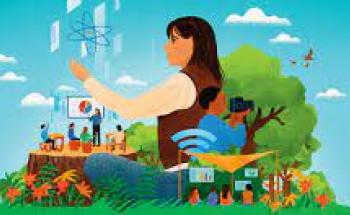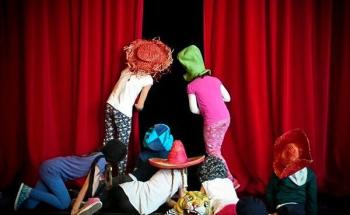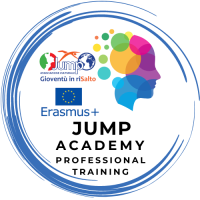
MEDIA EDUCATION/MIL- Media And Information Literacy+Video Making@School.New Frontiers To Educate New Global Media Literate Citizens And Fight Bullying
This course is an innovation because it is the fusion of different learning paths we have crossed to make a unique training program more practical than theoretical.
It combines the fundamentals of Media Education/MIL and Video Making which are useful tools for students engagement, inclusion and to fight bullying at school.
Description
Video Making or digital Storytelling is trendy now, thanks to many new professions born in the digital era connected with social media, marketing, and digital content production. According to the actual digital transformation happening, it’s recognized that videos are a very powerful tool to teach, educate and involve. Nowadays, kids and youngsters have to be considered a kind of addicted to videos and YouTubers fans. The risk of becoming clinically addicted is true but, at the same time, young generations have to become more aware of how a video can be created, for professional and educational purposes. Included, many teachers have become YouTubers, bloggers, and video makers with public channels of social pages where they become famous and they share what they can create to teach and change methods and perspectives in education.
Storytelling has always been a significant part of history, but the means through which the stories have been told have evolved with each civilization. From the oral histories presented by bards in ancient courts, to the works of scribes during the Renaissance, to newspapers, CNN, and now the Internet, a personal narrative has been used to communicate the events of the past. Digital storytelling now combines tradition with technology and allows students to tell stories through voice, text, images, audio, and video.
Digital stories allow students to take a linear series of events and turn them into a multidimensional experience. It encourages them to communicate, collaborate, and research as well as to infuse media into the process. A plethora of tools and apps exist to create these projects, and all of them enable students to gain a deeper understanding of history as they explore the most effective way to retell it.
Digital storytelling for all is a training designed for all who want to deepen their knowledge about audiovisual content creation.
Storytelling is a meaningful tool that can be used in the classroom to engage student learning as well as to enhance the expression of views, and stimulate creativity, critical thinking, and reflections on social issues.
Storytelling is an experience created with the main aim to offer a practical approach to learning how to create an audiovisual product in its 3 main phases: pre-production, production, and post-production.
“Video art is a contemporary art form that deals with everyday issues, problems, dilemmas, and wishes, and focuses mainly on human existence and experience. Video as a medium in artists´ hands has the ability to connect identity, experiences, and knowledge through the arrangement and management of images, text, and sound into a work of art. As a technology tool it has the capacity to capture learners´ interest and connect school life with the everyday world since video is already a significant part of their life in many forms (e.g. through television, internet, video games, and mobile phones)”.
The program structure will cross the different areas of video production and video concept focused on teachers’ and educators’ jobs related to the work in the classroom.
The increasing use of social media and media tools in school and the growing bullying phenomena start with very young students. Media has a huge impact on our lives and school is a long-term stage of life where teachers have roles as educators, but also as mentors and people who connect to the outside world themselves. Teachers stand in the middle between principals and parents and represent a point of reference for students who grow up in classrooms and need to become young adults and adults, European citizens ready to become freelancers, entrepreneurs, or employees.
Approximately 32 percent of students report being bullied at school, research shows that schools where students report a more severe bullying climate perform worse on standardized assessments than schools with a better climate.
Learning objectives
- Improving the understanding and awareness about Media Education and MIL and the importance and relevance of its use in nowadays school system
- Developing technical skills related to the pre-production, production and post production phase of video making applied to educational contexts
- Widening their perspective and skills related to the use of video storytelling for educational purposes
- Developing their creativity and ability to engage students with innovative methodologies that promote collaboration and active participation
- Learning how to promote critical thinking and autonomy for a more conscious approach to media by students, moving from passive users to conscious and skilled content creators
Methodology & assessment
Furthermore, in line with the JUMP Academy method, our courses are based on a strategic balance between formal and non-formal education, indoor and outdoor education and the team takes care of a very important aspect of international mobility which is the intercultural learning which we develop with short excursions and facilitating the interaction with local partners, businesses and citizens of our territory. Each local context has its own economy so it’s always useful, in training programs, to get in contact with concrete examples (experiential learning and real based learning).
We always try to connect our learners to local teachers and students to cooperate in developing innovation and networking for future projects.
Materials, digital tools & other learning resources
JUMP provides, after the completion of the course, all presentations, training materials and any other digital and learning tools used during the training sessions. Furthermore, extra materials are sent if there are updates and new ones researched afterwards.
Certification details
At the end of the training, JUMP issues a formal certificate of attendance, and the team is available to complete the Europass certification document according to the EU template and other documents required for reporting by the sending organization.
Our courses are in line with the Erasmus+ Quality standards for courses under Key Action 1 (learning mobility of individuals)
Pricing, packages and other information
-
Course package content:
In the course fee are included: organization, administration, trainers' costs and classes, further training/learning materials, certification, support of the team H24, photo-video reporting.
Extra costs are referred to logistics. JUMP is sending all the precise info when the participants or the Erasmus coordinator ask for information.
-
Additional information:Description of the services and activities included in the course package (such as accommodation, meals, transport) or available at extra cost.
-
Cancellation & changes:
With a proper time in advance is possible to cancel the participation, informing and explaining the motivation.
-
Additional information:The options and conditions for change and cancellation, and the policy in case of unforeseen circumstances (force majeure).
Additional information
-
Language:English
-
Target audience ISCED:Lower secondary education (ISCED 2)Upper secondary education (ISCED 3)Post-secondary non-tertiary education (ISCED 4)
-
Target audience type:TeacherHead Teacher / PrincipalICT Coordinator
-
Learning time:25 hours or more
Upcoming sessions
Past sessions
More courses by this organiser

NATURAL BORN TEACHERS. Health-Wellbeing And Mindfulness In The Teaching Profession

TICO TRAINING. Teaching Is…Innovation, Communication And Outdoor Education


